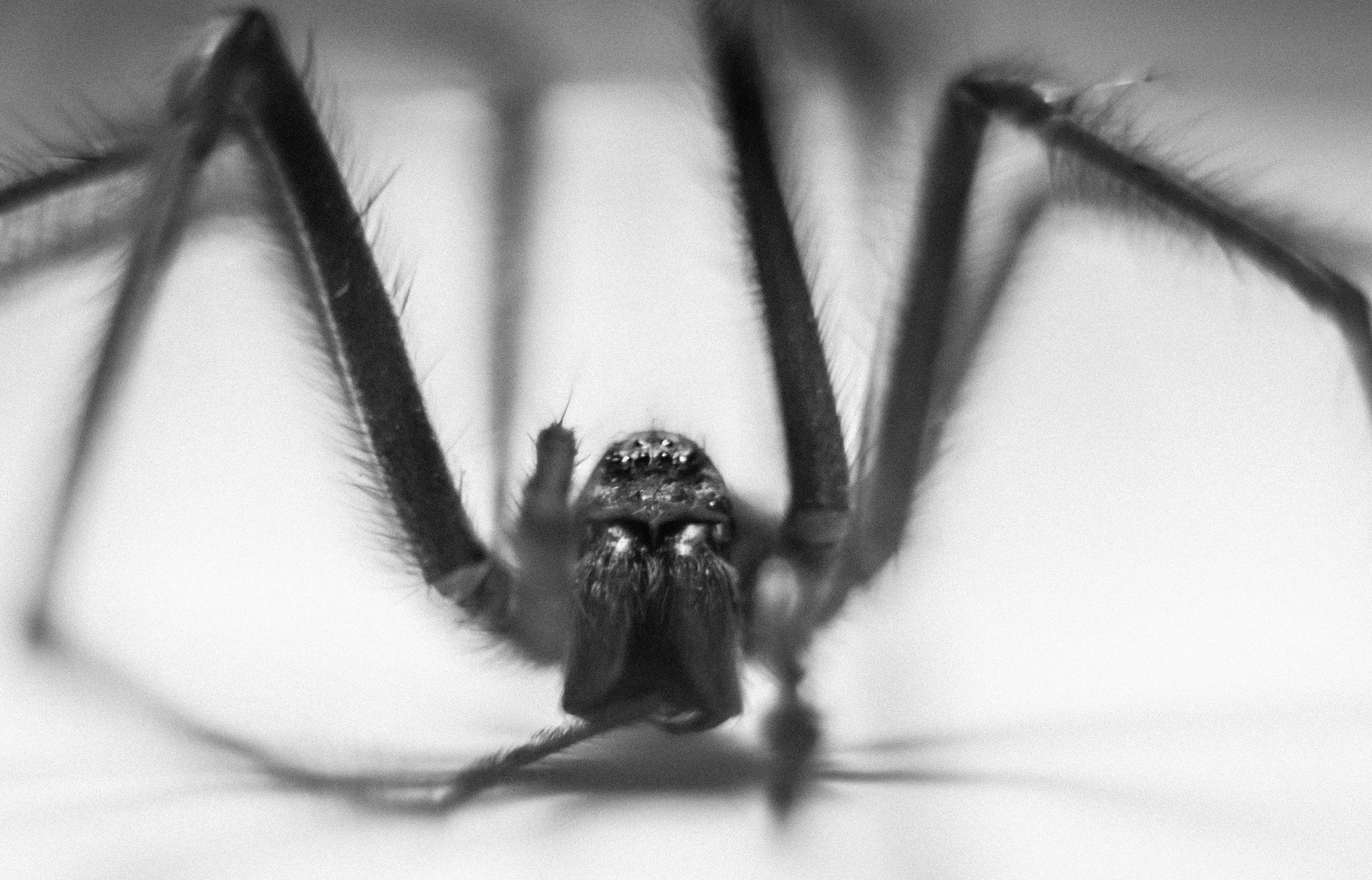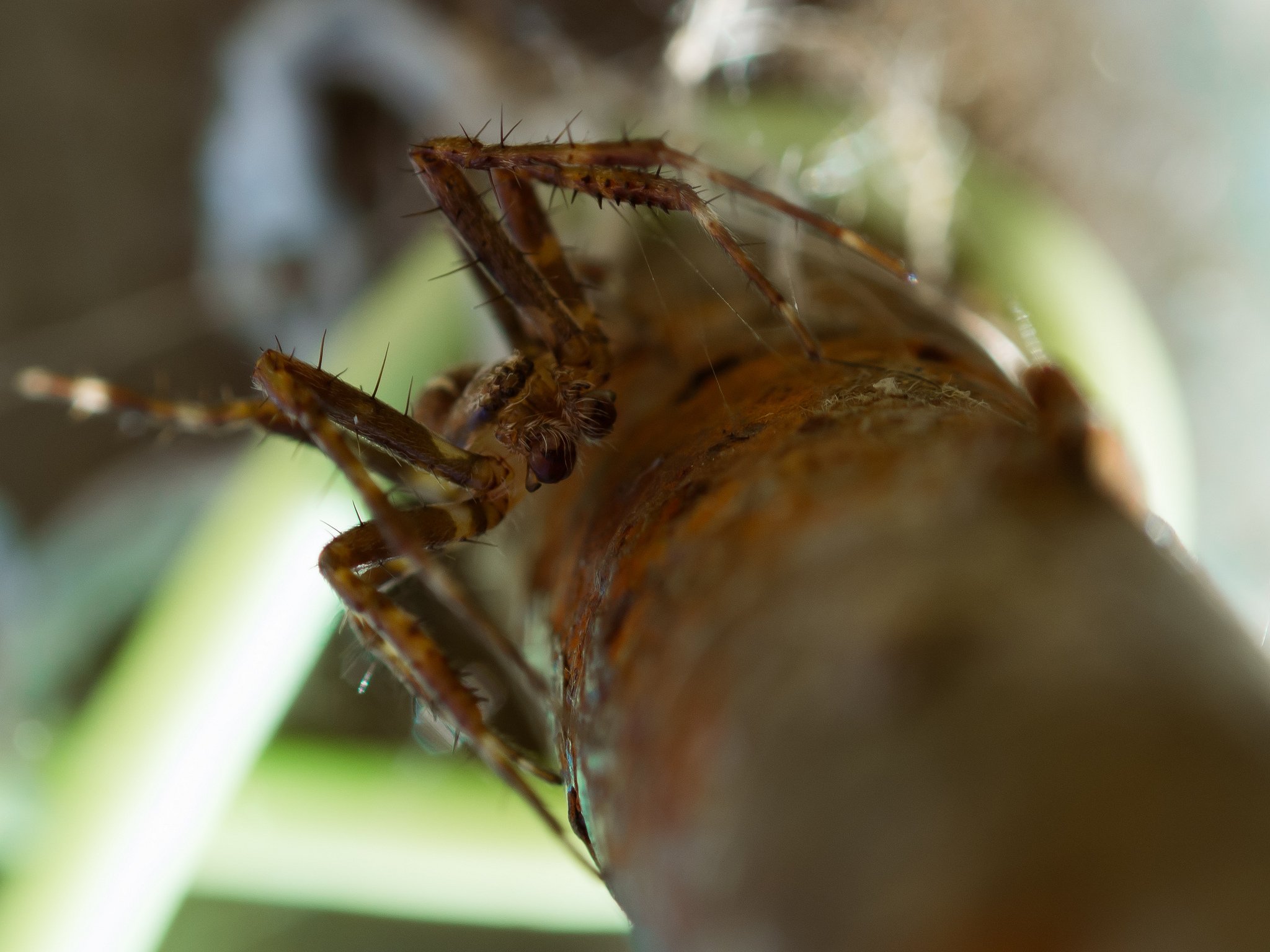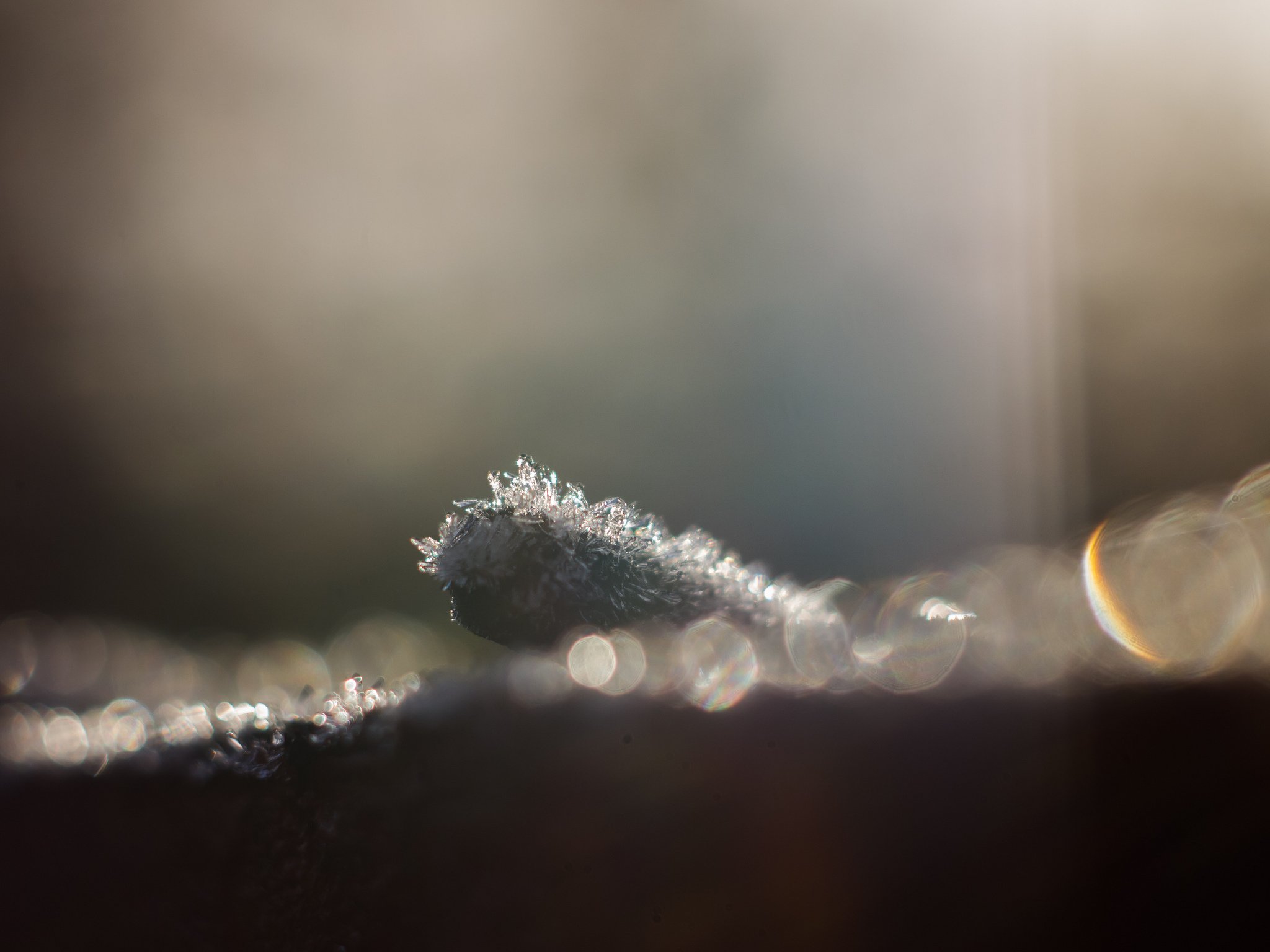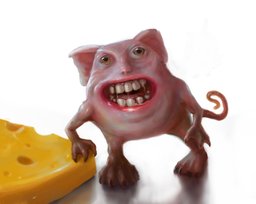Hey All
Its that time again, when I gather my thoughts on practical photography.
So for this article lets get going with highlighting those tiny details, the little creatures and worlds that normally you don't see.....its Macro Photography time. This is a multi part article so check back soon for the followup.
First off, as much I'd love the sharpest, best focus stacked macro photographs in the world. I don't want the technicals to get in the way of my shots. Macro photography can be expensive and tricky and there is a lot of pride in having those photos that excel in that area.
Again much like stated in my other articles, this isn't the type of focus (pun intended) that drives my photography. That said I don't ignore it though.
With out further ado, bring the pics I say!!
Spideylocks

Why on earth did I choose this image to start with.....
This image actually highlights why you don't always need the sharpest, cleanest macro photograph to create a strong image. Technically there is a lot "wrong" with this macro image. But the composition, the sense of scale by cropping into the image further and the massively shallow depth of field, makes this photo standout.
I find too often macro photographers get obsessed with clean cut, spent way too much money on a crazy lenses, lighting setup and mastering those perfect focus stacks shots......
Of course you may get some amazing shots and most likely way easier too at times, but that is beside the point. The content is whats important, the pixel level and optical quality is secondary in most cases. National Geographic and medical shots would be two of the many exceptions of course.
The Spider King

A monstrous image of a tiny spider
Fun fact.... I don't like spiders... but I truly love taking Photos of them... weird eh.
Lets chat about the gear I used here.
Honestly I took this photo the hardway.... Everything about it had been awkward to say the least. Firstly this had been taken with a first generation Olympus pen camera, a mirror-less interchangeable camera. This camera is tiny and had more or less no grip on the body.
Some would say cool, makes things easy to get in close and down to low level angles. Except i didn't have a modern lens on it, it was an old Vivitar 70-210mm Series 1 , with an adaptor for the camera. Check out Ken Rockwells review of it here
 +
+
This lens is huge and stupidly heavy for camera like that, then add a the adaptor length on it too.
The focus is fully manually as are the fstops. So taking this photo was interesting.... I was jammed close to the washing line pole and pointing my self with the camera towards the floor, In pretty much direct sunlight and no viewfinder(lcd screen was pretty washed out in the sun).
To quote someone wise... The best camera you have is the one in your hand :-)
I took about 10 photos at various distances and angles, many where unusable. As soon as I took this one I knew it was the one. The key post work I did here is a simple crop in once again. We have enough megapixels in most modern cameras that this is perfectly fine to-do. If you Macro isn't Macro enough, smash that crop button you may be surprised how doing a re-composition and crop in can improve your work.
Content is King, long live the King.
I'm going to end this part with two images. These two where taken on a wonderfully frosty day.
Frost and Ice can really make some great macro photographs. However you can truly make your photos shine by looking for compositions and structure that highlight the effects of frost.
The Frosted Light
 The key to this image is Lighting, using it to create reflections on the ice crystals across the entire images but also using the properties of the retro lens I had used to diffuse the lighting in spectacular ways. Those artifacts from the light reflections are some of my personal favourites visual treats.
The key to this image is Lighting, using it to create reflections on the ice crystals across the entire images but also using the properties of the retro lens I had used to diffuse the lighting in spectacular ways. Those artifacts from the light reflections are some of my personal favourites visual treats.
Blades of Ice
.jpg)
I loved the crossing structures of the grass with the flower head while the ice sparkles like glitter on the petals and grass blades. The isolation of the these elements and the background separation, clarifies the main shapes in the photo through simplification of the surroundings. Simpler can indeed be better.
To conclude, use your artistic eye to take your macro shots, don't worry about having the sharpest of photos. Think about how your image can benefit from different angles, perspectives, composition and how light can play a part in your macro photography. Most importantly think about what drives your photography for your self.
Thanks for reading.
Check out my latest posts on my blog.


Cheers
Nick
